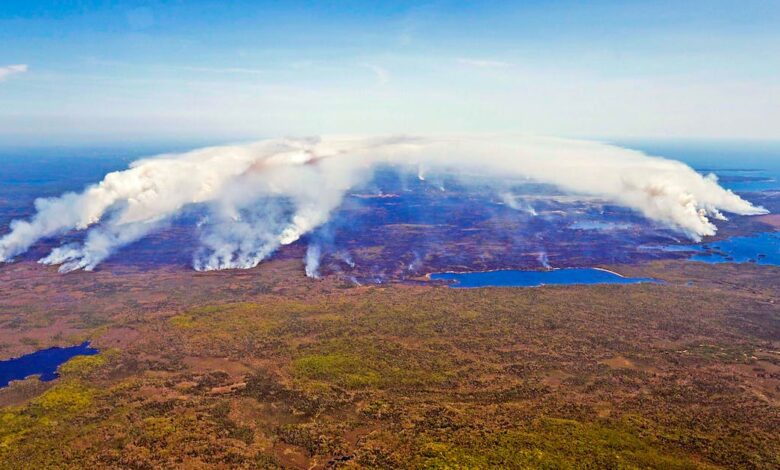Program to protect your property from wildfires is seeing increased interest in Nova Scotia

The number of requests for information and presentations about the FireSmart program — designed to help homeowners make their homes as safe as possible in the event of a wildfire — has increased significantly this year.
But Kara McCurdy, fire prevention officer for the Department of Natural Resources and Renewables, said that while some of that uptick has come since the Shelburne County and Tantallon wildfires broke out, the number of requests went up before those fires broke out.
“I think people across Canada see what’s happening in other provinces and think ‘what if this happens in my neighborhood?’ McCurdy said.
She said FiresSmart initiatives have taken place at various levels in different areas of the county this year.
“Some of it was just public education, some communities were doing community-wide risk assessments, some people were doing individual home assessments,” she said. “Most times I’m contacted, it’s a group of people who have an association, or someone who’s spearheading it and it becomes a FireSmart committee for that community or neighborhood.”
McCurdy said she then becomes a support for that group as they work to reduce risk in their area.
“When we go in to do the risk assessment, it’s not just (looking at) the house, it’s the community construction itself: how close is the forest to the structures and what kind of forest is it? Is it softwood, is it hardwood?”
Other elements considered include landscaping and whether the lawns are mowed and well maintained, whether there are fire-resistant plants around the foundation or deck (not softwood shrubs) of the structure, or bark mulch in flower beds.
What’s in the yard can also be a factor, such as firewood piled too close to the house, or building materials and other large groups of flammable objects close to the building.
McCurdy said barns are another thing to look at and there should be space around them, just like a house.
“It is often a domino effect in forest fires. Once one structure catches fire, it’s the next and the next. Sometimes it only takes one shed to catch fire and set the house on fire.”
She said some of the homes lost in last month’s fires were ignited by radiant heat from the nearby burning forest.
Other tips are on the FireSmart website. Anyone wishing to contact DNRR for information about the program or to arrange a visit or consultation can get in touch [email protected].
In the meantime, they can also take a short, free course on FireSmart Canada’s website called FireSmart101.
“Residents need to realize that a wildfire can be just like any other natural disaster and we need to prepare for it,” McCurdy said. “You work to prepare for a hurricane or a snow event. Wildfires are no different.”
She said the little things will be the best things to reduce risk, such as mowing, cleaning gutters and keeping firewood stacked.
Interest in the program has come not only from areas near where major fires have burned in recent years, but also from the mainland as far as Cape Breton, McCurdy said.
“People see what’s going on and think ‘Oh, maybe I should consider this.'”




